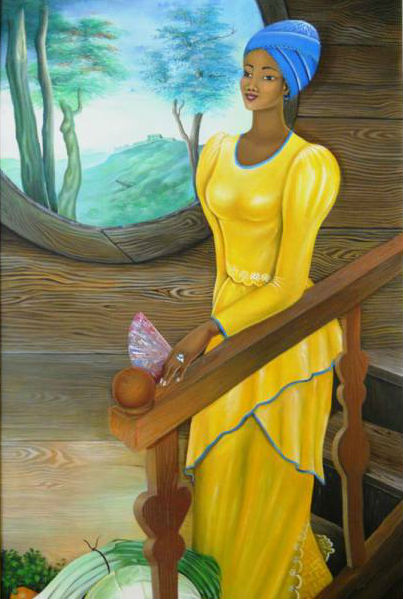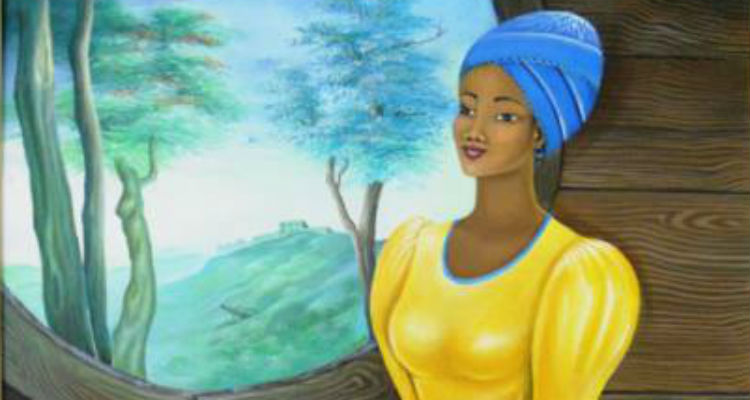Marie Claire Heureuse Félicité Bonheur (1758-August 8, 1858 ), was the Empress of Haiti (1804-1806) as the spouse of Jean-Jacques Dessalines.
 Félicité was born in Léogane to a poor but free family as the daughter of Guillaume Bonheur and Marie-Élisabeth Sainte-Lobelot. She was educated by her aunt Elise Lobelot, who was the governess of a religious order. She married Pierre Lunic, master-cartwright to the Brothers of Saint-Jean de Dieu, but became a widow in 1795.
Félicité was born in Léogane to a poor but free family as the daughter of Guillaume Bonheur and Marie-Élisabeth Sainte-Lobelot. She was educated by her aunt Elise Lobelot, who was the governess of a religious order. She married Pierre Lunic, master-cartwright to the Brothers of Saint-Jean de Dieu, but became a widow in 1795.
During the siege of Jacmel in 1800, she made a name for herself working for the wounded and starving. She managed to convince Dessalines, who was one of the parties besieging the city, to allow some roads to the city to be opened, so that the wounded could receive help. She led a procession of women and children with food, clothes and medicine back to the city, and then arranged for the food to be cooked on the streets.
On April 2 1800, she married Jean-Jacques Dessalines, with whom she had a long-time relationship. She was made Empress Félicité of Haiti upon the creation of the monarchy of Haiti, and crowned with her husband at the Church of Champ-de-Mars on 8th October 1804. They had four daughters and three sons together, including a pair of twins. She also legitimized the numerous children produced by Dessalines’ adulterous affairs.
Empress Félicité worked in the fields of education and health as a nurse, tending to the needs of the poor. Older than Dessalines, it was she who instilled in him the rudiments of reading and writing. She was described as kind and merciful with an elegant and cordial manner; she was a contrast to her husband in her tolerance and support and by showing indiscriminate kindness to people of all colors. She saw to the needs of the prisoners, and she did not hesitate, despite her husband’s anger, to save many of them from the 1804 Haiti Massacre arranged by her husband. She is reported to have fallen to her knees before him to beg him to spare their lives and is said to have hidden one of them, Descourtilz, under her own bed to save him.
After the death of Dessalines in 1806, she denied the offer from Henry Christophe to move in with his family. As a widow, she was styled Princess Dowager on 17 October 1806. As the property of her late husband was confiscated, she lived in poverty in Saint-Marc until August 1843, when she was granted a pension 1,200 gourdes.
In 1849, when Faustin I of Haiti became Emperor, he enlarged Marie-Claire’s pension as a sign of his admiration of Dessalines. Marie-Claire refused the money, and moved in with her granddaughter. She died on August 8, 1858 in Gonaïves.
In her honour, the Fondation Marie-Claire Heureuse Félicité Bonheur Dessalines, also known as the Fondasyon Félicité (FF), was established by Dr Bayyinah Bello in 1999 to undertake humanitarian, social and educational work in Haiti. Soon after the 2010 Haiti earthquake, the non-profit organization Friends of Fondation Félicité was set up to support FF in helping the Haitian people to rebuild their country.
Sources:
http://www.friendsoffelicite.co.uk/Pages/EmpressFelicite.aspx
http://en.wikipedia.org/wiki/Marie-Claire_Heureuse_Félicité



